Yesterday morning I saw a very interesting, and very expensive, silver plated, vintage alto rothophone on eBay that was made by Bottali in Italy.

Source: WOODWINDS – COLLECTIBLES & ANTIQUES on eBay.com
Ever since seeing and trying one a number of years ago in Seattle, I have fallen in love with these anorexic-looking, saxophone-shaped sarrusophone relatives. I even briefly entertained the thought of buying the one I tried in Seattle, but then sanity overtook me again, and I asked myself: Helen, what exactly would you do with it?
Well that is exactly the question that one would have to ask oneself before dropping 19K, make that 24K—since it seems that last night the seller decided to jack the price up another 5K on this roth—on an instrument that no one is writing any music for. Hey, it’s not like you’ll be playing alto sax parts with it, or even bassoon or oboe parts. So exactly what does one play with an alto rothophone?
Practicality of what to play with it aside—because let’s just say you really, really, want to have a pristine example for your private collection of rare collector horns—if money is no object, then this Bottali-made, Ferdinand Roth alto rothophone might just be the one for you.

Source: WOODWINDS – COLLECTIBLES & ANTIQUES on eBay.com
The seller has certainly done his homework when it comes to rothophones. He managed to find an archived page from the old International Double Reed Society’s website. The page is a reprint of an article that was published in the Journal of the American Musical Instrument Society, Vol. XII, 1986, pp. 68-106. Much of the seller’s ad text comes from the article titled: Sarrusophone, Rothphone (Saxorusophone) and Reed Contrabass, by Gunther Joppig.
How the seller describes this minty-looking alto rothophone:
Rare Antique Rothphone in amazing original restored condition. This is a alto Rothphone, also known as a Rothophone and a Rothaphone. It is a double reed instrument made in Italy by Ferdinando Roth. The Alto Rothphone is the rarest of the Rothphone. Looks like a thin saxophone but has an amazing beautiful sound to it. Reminds me a an English horn and a soprano saxophone. You may never again see one for sale on EBAY. [You will.] Should be placed in a museum. [Yah, maybe.]
The Rothphone is a metal double reed instrument similar to the sarrusophone built in saxophone form. It was invented by Ferdinando Roth (1815–1898) and is also known as the rothophone, rothaphone, or saxsarrusophone. The bore of this instrument is narrower than that of either the sarrusophone or saxophone.
name, rothphone, even though he used it to designate an instrumental concept which contains nothing original at all. All in all, rothphones are nothing but sarrusophones built in saxophone form. When the Orsi factory of Milan came into possession of the prototypes, these instruments were offered to the public as Saxorusofoni in their Catalogo Generale 48 of 1937 (fig. 8).[54] The portmanteau word “saxorusophone” indicated, first, a combination of the construction principles of the saxophone with the sounding principle of the sarrusophone, and second, a union of two families of instruments that had been from the very beginning, bitter opponents.
The Roths themselves originated, as did a whole series of instrument-making dynasties, in Adorf in the Vogtland. In the lists of special tax levies for defense against the Turks in 1531-32 and again in 1542, the name Roth appears beside those of Heckel, Hembach (Embach), and Pfrotschner (Pfretzschner).[55] The instrument-making activities of these families in the eighteenth century are known through examples of their craft that have been preserved; towards the beginning of the nineteenth century, many members of these families emigrated and founded respected firms. Ludwig Embach (1783-1842) established a wind instrument factory in Amsterdam in 1820., and took out numerous patents for improvements; Johann Adam Heckel 1 (1809-1866) founded a renowned workshop for brass instruments in Dresden in 1836; and his cousin Johann Adam Heckel II (1812 -1877) began building bassoons with Carl Almenrader (1786-1843) in the town of Biebrich near Wiesbaden in 1831.
In 1838 Ferdinand (Ferdinando) Roth opened a firm for the construction of brass instruments in Milan. This firm soon enjoyed a good reputation, and was recommended as supplier for the Italian military bands: a “Provrista degli strumenti” of the last century mentions the Roth Company as purveyor to the military of “Cornette, Flicorni, Trombe, Corni, Clavicorne, Tromboni, Bombardini, [and] Pelittoni. 1156 After Roth’s death, the firm was carried on by the Bottali brothers, who also patented and built the rothphone. In Paul de Wit’s Welt-Adressbuch der Musikinstrumenten-Industrie, 1912 edition, there is the following entry:
Ditta Ferd. Roth Flli. A.M. Bottali Succ., Piazza Andrea Doria 6. Holz- und Metallblasinstrumenten-Fabrik. Gegr. 1838. Massime onorificence. Esportatione mondiale. La piu grande e completa fabbrica italiana. Becken- und amtams-Fabrik.[57]
The Bottalis also took over the Milan workshop of Luigi Alziati, whose signature is to be found on the tenor saxorusophone currently in the Horniman Museum (fig. 9). In the catalog of the museum, the instrument is described as follows: “The ‘Saxorusofoni’ is [sic] believed to be a unique example of an experimental instrument similar in character to the sarrusophone but following the key-mechanism of the saxophone.”[58] As this instrument, except for the bell, is identical with a Bottali instrument from the author’s collection, it is possible that Alziati had carried out only a modification to the bell, which, with its sound holes on the side, is reminiscent of the heckelphone.
Wow! That has to be the most involved and researched eBay description that I can recall seeing for a musical instrument. Mind you, if I was selling a horn as lovely as the alto rothophone currently for sale on eBay, I’d likely be doing my homework too.
Here are the rest of the pics, of this remarkable looking, Bottali-made, Ferdinand Roth alto rothophone…
Now if you think that this amazing alto rothophone would be perfect for your collection, then you will have to dig deep. As I noted at the top, last night the seller upped the price from $19,000 to $24,000 for this recently overhauled, silver plated specimen.The question is why?
Sure there are 13 people watching the auction. I’m one of them, and I’m not seriously thinking of buying it. You can bet a bunch of the other 12 aren’t either. I suspect that they’re the Internet equivalent of tire kickers or looky-loos.
If the seller is lucky, perhaps one or two of these 12 people might be a serious buyer. Maybe one or the other might even might make him an offer. Yes, he is open to those. But honestly, when I see a price jump like that on an instrument, it smacks to me a bit of greed. Hey, if it had been a great deal at 19K, wouldn’t it already have been scooped up? ![]() I’m just asking.
I’m just asking.
The auction for this Ferdinand Roth alto rothophone is scheduled to run until next Sunday, March 15. (Provided no one utilizes the Buy It Now option of course.)
This will be an interesting auction to watch. I’ve not seen a silver plated roth before, nor can I recall seeing one in this condition. Needless to say I also haven’t seen one at this price point either. It will be interesting to see what the market will bear, or if just vanishes off eBay without registering a sale.




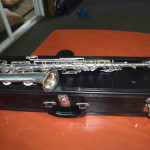

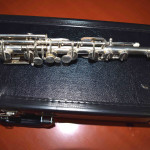

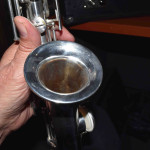


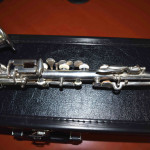
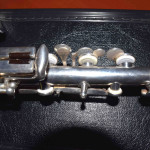


Very beatiful instrument, and the picture made by orsi is very wonderful, in a old bad i saw they had a poster about the notes of every single instrument made by orsi.
Just because i’m interessed I searched how much orsi wanted in the past comparated nowadays, and i think they were cheaper than nowadays.
in 1937:
1000 Lire
1300 Lire
1500 Lire
1800 Lire
2000 Lire
2016:
976 euros
1273 euros
1469 euros
1763 euros
1959 euros
Thanks to this beatiful website: http://www.infodata.ilsole24ore.com/2015/04/14/se-potessi-avere-calcola-il-potere-dacquisto-in-lire-ed-euro-con-la-macchina-del-tempo/?refresh_ce=1
Nowadays if you want to buy a powerful instrument you will pay much money:
3000 euros Patricola
5000 euros Buffet Crampon Tosca or Divine or the newest instrument they made
8000 euros Backun
11000 Selmer Bass clarinet lower C-
and of course, if you want to buy a vintage instrument you will spend many euros but comparated to the past, if you spent 1000 lire to buy a rare, unique and professional instrument made by on the best builder in Italy or 10 dollars to buy a Brilhart mouthpiece in 1920 circa you would spend less than now, because the value was lower…
This is sad, but interessing.
Hi Mirko.
Sorry it’s taken so long to reply to your comment. I was out of town for nearly 2 months when you wrote this, and honestly, a lot of comments fell through the cracks. I am now trying to play catch-up.
It’s not surprising that instruments have gone up in price over the years. The overall cost of living has increased, therefore it only makes sense that the prices of musical instruments—as well as their accessories—would have gone up as well. Sadly, when we look at what we as musicians get paid, that has likely not gone up to the same degree.
As a matter of fact, over the past 4 decades, here in Canada (and I suspect over most of North America) the wages for musicians have stayed consistent. Adjusting for inflation, musicians are making considerably less per show than they were in the 1970s, 1980s, and even the 1990s. Overall it is extremely depressing. I don’t know where that leaves today’s young performers.
As you point out, instrument and other gear costs have gone up. Add to that monies spent on repair and maintenance, and the term starving artist has never been been more accurate.
Update: Well I don’t know what finally happened to this roth, but the seller does seem to be using a photo of it, or one like it, as his user image on eBay.
The last auction simply stated the age old: “This listing was ended by the seller because the item is no longer available.” According to the auction page, it was ended on April 17, 2015.
I wonder if he found anyone willing to give him $12,500? Doubt it. I’d like one, but I sure as hell am not willing to spend that much on an instrument that has virtually no practical uses. Just MHO of course. Yours might vary of course. If it does, contact the seller, he might still have it, and just love to sell it to you.
Yup, something happened alright. I’m not sure what, but the buyer did make the following changes on the day that wrote this post, and after…
Mar-10-15 07:26:32 PDT Buy It Now Price
Mar-10-15 07:36:27 PDT Category
Bold
Title
Mar-10-15 14:28:52 PDT Description
Category
Buy It Now Price
Title
PictureURL: Pictures Added/Deleted
Mar-11-15 10:05:25 PDT Buy It Now Price
PictureURL: Pictures Added/Deleted
Mar-14-15 07:48:50 PDT Buy It Now Price
Subtitle
The seller did end the auction when the horn was listed at $13,500. Let’s see if this roth will turn up again, or if it’s gone from eBay for good.
Edit: I just checked for new listings, and it is listed new for $15,000. Let’s see how that ends.
Update: Well that ended, and now it’s back again for a BIN price of $14,500.
“This listing was ended by the seller because there was an error in the listing.”
I read your article and the eBay ad on Friday or Saturday and I’m pretty sure the price was $17K. If you look at the ad, it closed at $13.5K, so something happened.
As Theo mentioned, it’s still possible to buy these things new. Orsi makes a wide variety of horns on special order.
The IDRS article quoted in the eBay ad is probably the only reliable Rothophone info available on the ‘Net. I quoted the article extensively when I wrote about the Sarrusophone.
It is cheaper to order a new alto rothophone at Orsi.